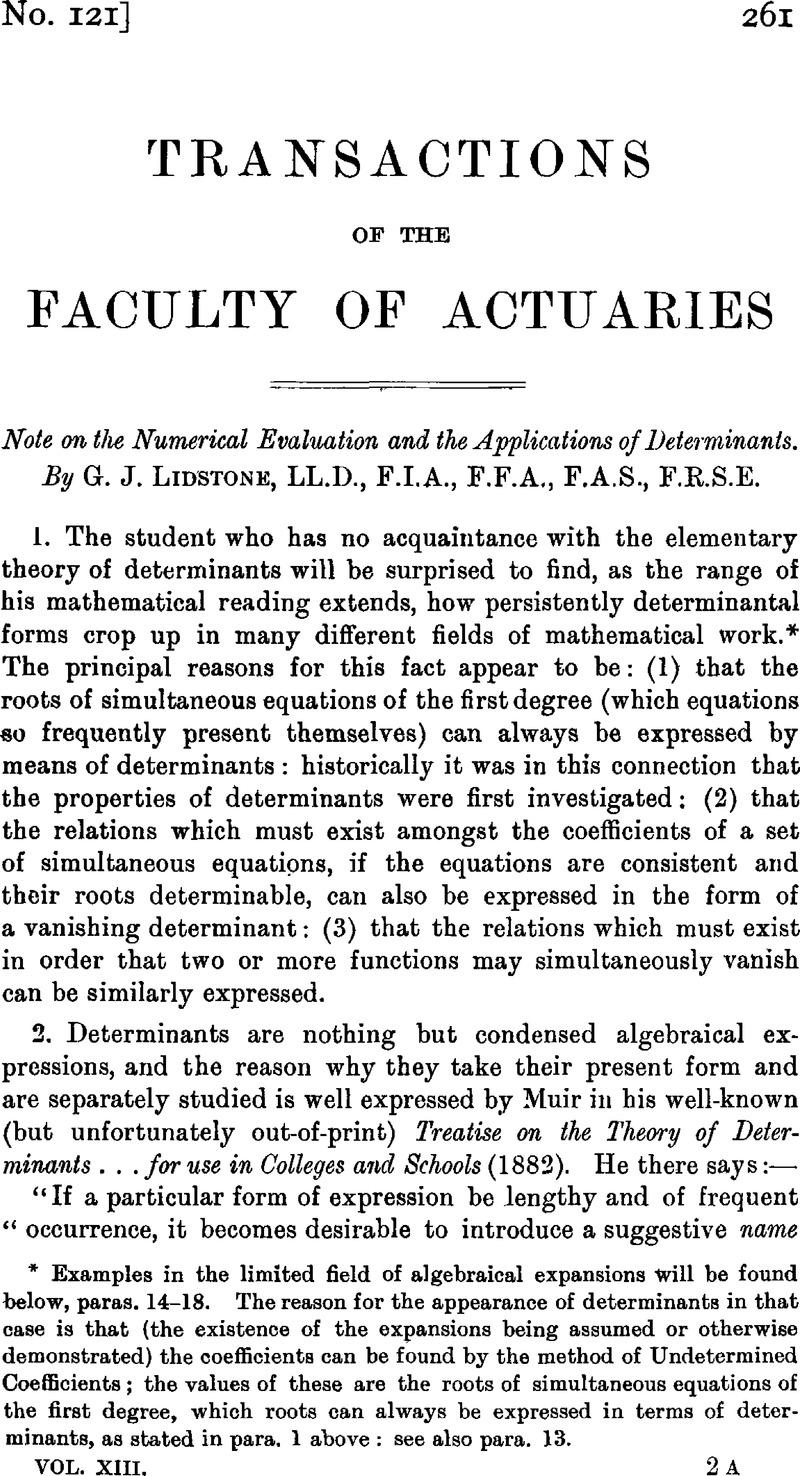No CrossRef data available.
Article contents
Note on the Numerical Evaluation and the Applications of Determinants
Published online by Cambridge University Press: 07 November 2014
Abstract

- Type
- Other
- Information
- Copyright
- Copyright © Institute and Faculty of Actuaries 1931
References
page 261 note * Examples in the limited field of algebraical expansions Will be found below, paras. 14–18. The reason for the appearance of determinants in that case is that (the existence of the expansions being assumed or otherwise demonstrated) the coefficients can be found by the method of Undetermined Coefficients ; the values of these are the roots of simultaneous equations of the first degree, which roots can always be expressed in terms of determinants, as stated in para. 1 above : see also para. 13.
page 264 note * See also Whittaker and Robinson's Calculus of Observations, pp. 71–5, where the method is ascribed to Chió.
page 264 note † Muir does not, however, suggest this formula as the best mode of evaluation: in the text, para. 54, p. 71, he gives a similar (but somewhat less easily-applied) formula which he says is “important as affording an easy means of evaluating a determinant whose elements are expressed in figures.”
page 269 note * This elegant process is given by Goursat in his Cours d'Analyse: see English translation by Hedrick, Vol. I., p. 393, para. (28), Note.




